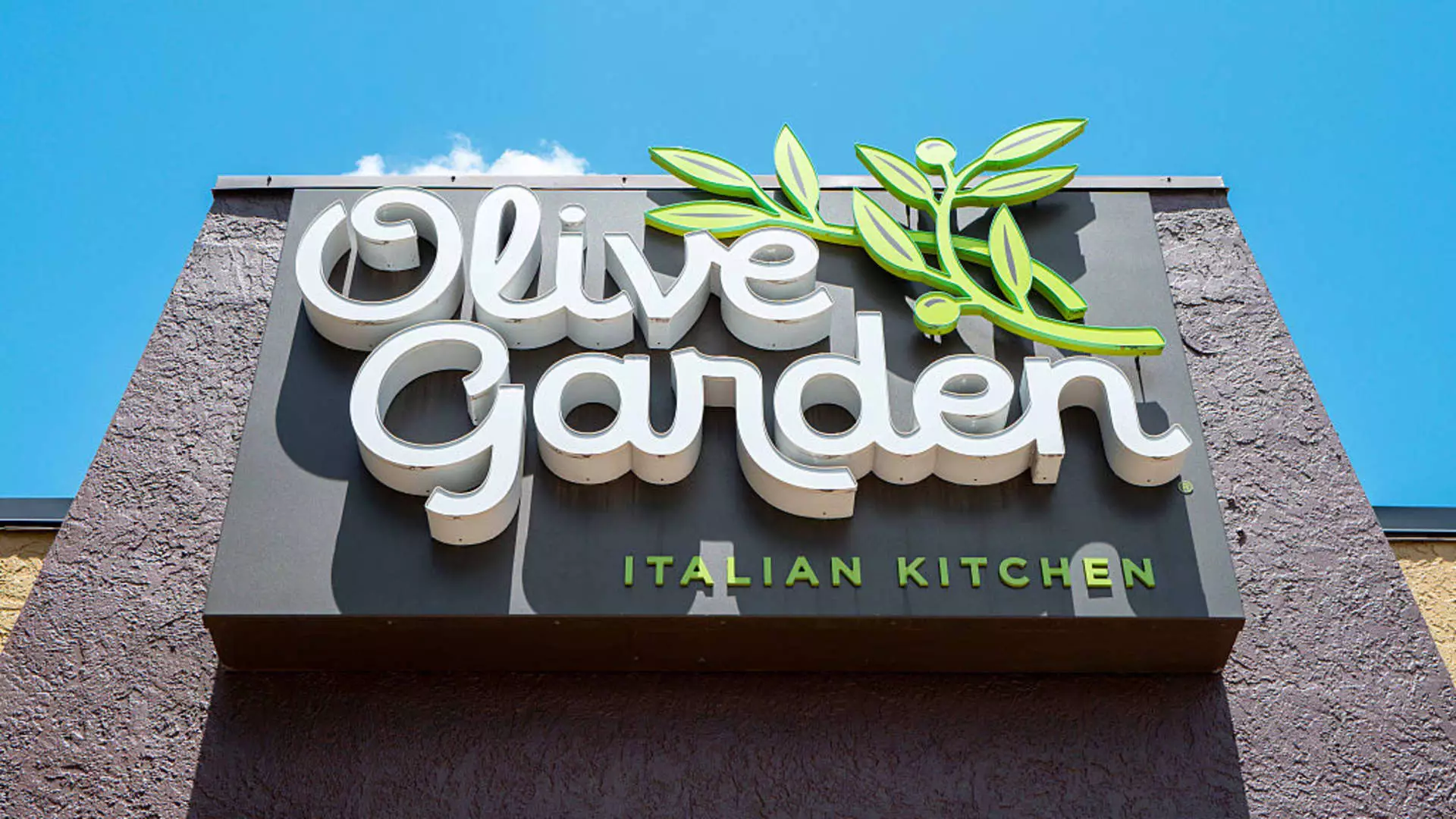Darden Restaurants, often heralded as a resilient player within the casual dining sector, has succumbed to the harsh realities that plague the restaurant industry today. Their recent quarterly report paints a picture of cautious optimism marred by underlying fragility. Despite boasting a modest revenue increase and a slight uptick in same-store sales, the overarching narrative is one of stagnation masked by superficial growth. Wall Street responded with a brutal 9% decline in share value—an unequivocal sign that investors are losing faith in the company’s ability to sustain its current trajectory.
Analyzing Darden’s performance exposes the illusion of strength that management attempts to project. The company’s reported net income improvement, bolstered by acquisitions and asset sales, rather than genuine organic growth, suggests that the core business faces mounting headwinds. When adjusted for non-recurring items, earnings per share barely match previous expectations, underscoring that the apparent profit gains are not as impressive as headlines might imply. The reliance on strategic divestitures like Bahama Breeze and gains from asset sales underscores an unsettling reality: Darden is increasingly dependent on short-term financial engineering rather than robust, sustainable growth.
The Myth of Consumer Loyalty and Value Proposition
It’s tempting to interpret rising visit numbers across Darden’s brands as an indicator of brand loyalty and strong consumer demand. However, a closer look suggests these figures might mask a more troubling trend—the erosion of consumer discretionary spending and the strategic pivot towards value-driven offerings. CEO Rick Cardenas touts increased visits from higher-income groups alongside trade-up behavior, but such claims might be overly optimistic.
In reality, the casual dining segment’s competitiveness has shifted sharply. Fast-food and fast-casual establishments, with their relentless price hikes and convenience, are chipping away at traditional sit-down restaurants. Darden’s strategy to keep menu price increases below inflation at just 0.3% indicates that profit margins are under pressure, forcing concessions to entice customers. This tactic underscores an industry in survival mode, where maintaining traffic numbers often comes at the expense of profitability—a dangerous game that can’t be sustained long-term.
Furthermore, the company’s efforts to prop up sales through promotional initiatives like the Never-Ending Pasta Bowl and partnerships with delivery giants such as Uber hint at desperation rather than innovation. Delivery, while boosting transaction frequency among current customers, risks diluting brand value and eroding the premium positioning that brands like Olive Garden historically enjoyed. It’s a reflection of a broader industry trend: the commodification of dining experiences turning into a price war, with few winners remaining.
Long-Term Prospects and the Illusion of Growth
Darden’s optimistic projections for fiscal 2026—targeting 7.5% to 8.5% revenue growth—are ambitious given the current economic landscape. While the company claims to have a diversified portfolio, the reality is that its reliance on Olive Garden and LongHorn Steakhouse remains significant. Olive Garden’s 5.9% same-store sales growth seems impressive, but it’s an illusion when viewed in the context of a declining industry where many brands are struggling even to stay afloat.
The fine-dining segment’s negligible decline highlights the fragile nature of its recovery efforts. A 0.2% decrease, better than expected, can hardly be shrouded as a sign of a turn-around. Instead, it exposes the vulnerability of more upscale dining options to macroeconomic shifts—like the resurgence of business travel and weekday routines—that have yet to fully rebound.
What truly concerns is Darden’s reliance on superficial metrics and optimistic forecasts that may not materialize. A significant risk looms: as consumer budgets tighten and economic conditions worsen, casual dining chains will face mounting pressure. If Darden’s planned growth strategies hinge heavily on maintaining existing consumer loyalty without addressing structural industry challenges—such as declining foot traffic and rising operational costs—they may find themselves ill-prepared for the inevitable downturn.
In essence, Darden’s recent report is a stark reminder that the casual dining sector’s supposed resilience is an illusion. Beneath the surface lies an industry fighting to remain relevant, with its best days potentially behind it. While management’s assurances of growth and stability sound reassuring on paper, the reality indicates a more precarious future—one where complacency and overconfidence could spell disaster for even the most seemingly stalwart brands.

